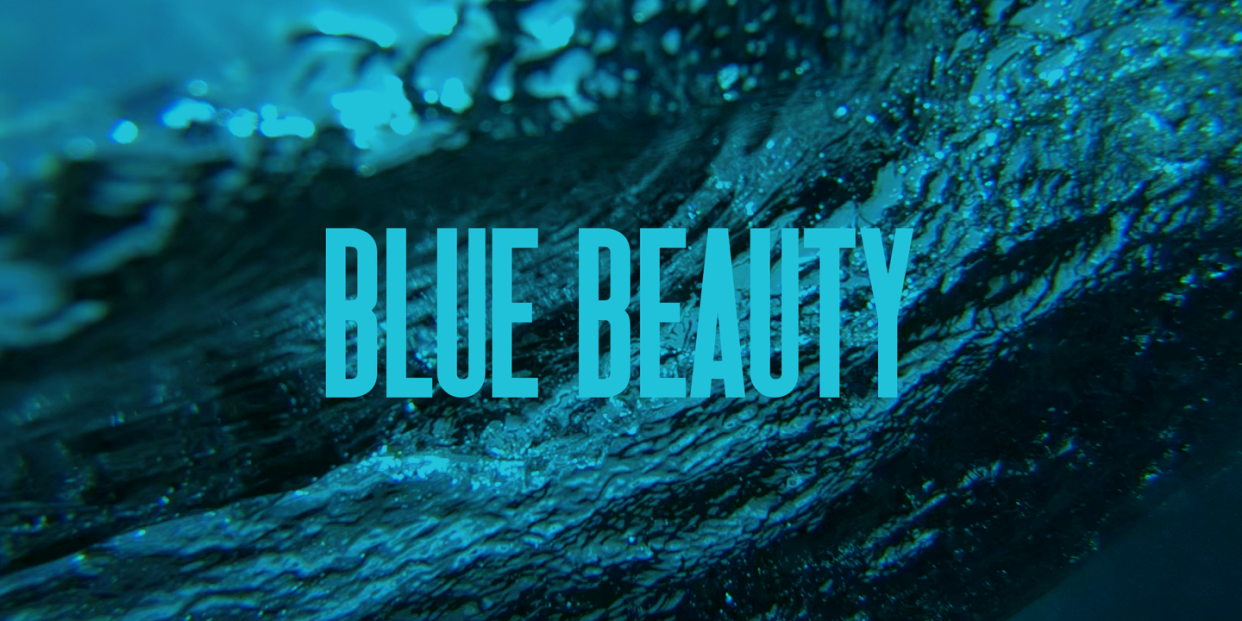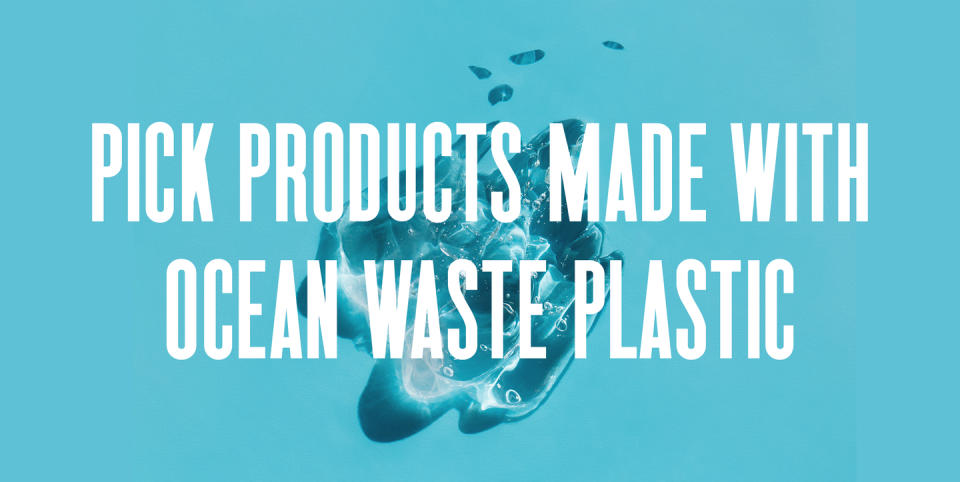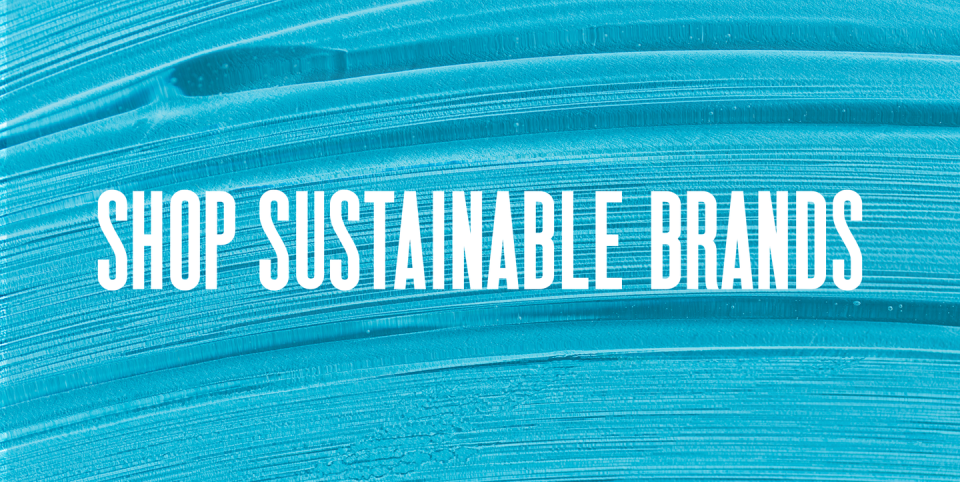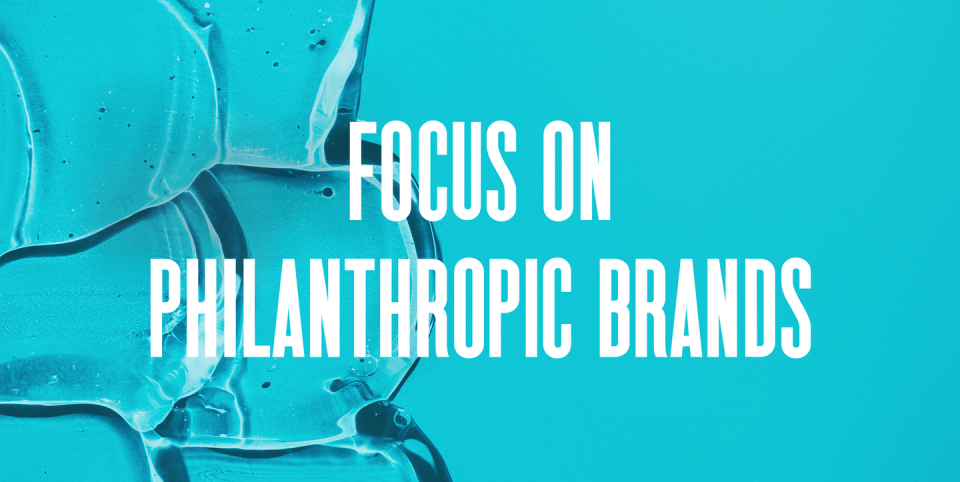Wait, What Even Is “Blue Beauty”?

“Hearst Magazines and Verizon Media may earn commission or revenue on some items through the links below.”
If I had to guess, you're probably reading this story right now because you have no idea what the term "blue beauty" even means. Like, is it a new form of green beauty? Or beauty products inspired by...the ocean? Or, I don't know, a whole new ~mood~? To be honest, it's a bit of all three. Blue beauty, in a nutshell, is a subsection of the clean beauty world that focuses on—you guessed it—the ocean, plus everything in it.
And if you're new to blue beauty, or if you still think it's just a thing that impacts dolphins and turtles, we've got a lot of catching up to do, starting with some not-so-fun facts that you (and everyone else) need to know.
These stats are alarming, and there's no denying the beauty community has played a major role in creating them. "Each year, the beauty industry makes over 100 billion cosmetic packages—compacts, jars, bottles, etc.—and about 22 billion single-use sachets too," says Mia Davis, VP of sustainability and impact at Credo Beauty. "The vast majority of these are made of virgin plastic and cannot be recycled either."
In fact, even seemingly safe, eco-friendly cardboard packaging will often contain hidden plastic in the form of laminations and adhesives, says Conny Wittke, founder of Superzero, while product formulas themselves can contain small levels of plastic that eventually make their way to the ocean. "We're responsible for the huge amounts of micro plastics found in formulations that run down our drains and into our waterways," says Wittke.
It's not all doom and gloom through. Thankfully, there's a silver lining to this plastic crisis, and that's blue beauty. The growing movement focuses on the relationship between the beauty industry, plastic waste, and the health of our planet's streams, rivers, bays, and, of course, oceans. "Calling something 'blue' is meant signal that a product is not harmful to waterways and/or is inspired by the ocean," explains Davis. Think of it as subsection of the green-beauty movement with a hyper focus on water and marine life.
So what to do with this new, kinda scary-sounding information? Educate yourself, tell your friends, and then try to choose beauty products that won't further contribute to the problem. Keep reading to learn about the three biggest ways you can make a difference as a consumer, along with the 12 best blue beauty products—from shampoo to face cream—to try right now.

Currently, the most abundant form of marine litter is in the form of floating plastic debris. And this isn't just a problem in urban waterways—according to the International Union for Conservation of Nature, plastic waste has been detected on shorelines of all the continents, so you know the issue is widespread (ever hear of the Great Pacific Garbage Patch? It'll horrify you).
And even though yes, we all know trash + oceans = bad, it's actually a bigger deal than that. Because all of this plastic and micro plastic debris not only accelerates the negative effects of climate change, but it's also deadly to animals and marine life, and it can contaminate our food and drinking water supply. Sound intense? That's because it genuinely is. Which is why it's so important to talk about it.
In an effort to help solve the problem, blue beauty brands (like the four below) are using plastic collected during ocean clean-ups (aka "ocean-bound" or "ocean-waste" plastic) to make their product packaging. Ocean-bound plastic (you'll commonly see it referred to as OBP) is generally defined as plastic that's found within 30 miles of a coastline, and ocean-waste plastic (OWP) is plastic that's already made its way to sea. Using OBP and OWP is a great way to clean up the existing mess we've created, while preventing a future mess as well.

The blue brands that are really making an impact are the ones doing everything with sustainability in mind, which includes:
Choosing responsibly-sourced and environmentally-friendly ingredients
Using recycled or recyclable materials in packaging
Utilizing low- or zero-waste production methods
Davines, Biossance, and Superzero are three prime examples of brands minimizing their footprint while making damn good beauty products in the process. Other brands, like Mara, are taking things a step further by offering mail-back recycling services for their customers. Once you have three full-size or travel-size empties, Mara will send you a prepaid shipping label to send them back to be properly recycled via TerraCycle, a program that helps ensure empties get the second (or third) life that they deserve.
Probably the important thing when it comes to sustainability and blue beauty, though? Ditching single-use plastic. Yep, that means anything individually wrapped, or one-time-use products (like sheet masks, product samples, packets, etc.). "Single-use plastics are made to be used for a few minutes, but the negative impacts on our oceans can last for hundreds of years," says Davis. Knowing this, we should all be avoiding any products that come in single-use, one-and-done packaging.

Some beauty brands are riding the blue wave by partnering with companies and non-profits who are also dedicated to preserving our waterways and marine life. Through these partnerships, brands will help participate in beach cleanups, donate revenue from product sales, implement better sustainability practices, commit to conservation goals, and more. These are all incredibly valuable ways to actively support our oceans and marine life, while also bringing much-needed awareness to these environmental issues. And shopping from these brands (like the ones below) is an easy way for you to show your support too.
So now you know: Our oceans and waterways need help, like, urgently. And it doesn't take a degree in biology or environmental science to make a positive change. Simply being more mindful about your plastic consumption and more critical of the beauty brands you buy from are two very doable ways to make meaningful change.
You Might Also Like

